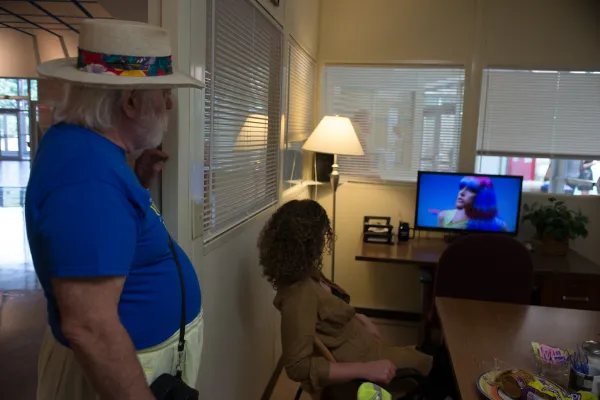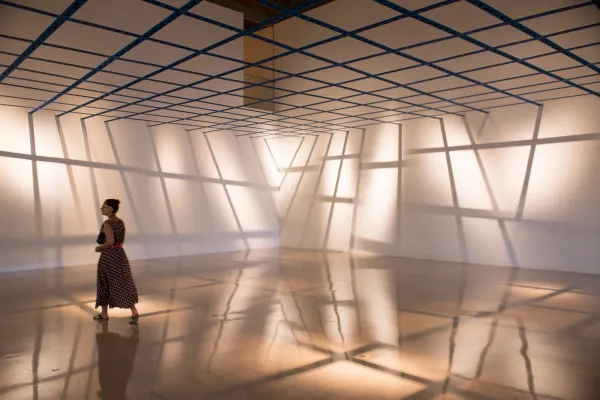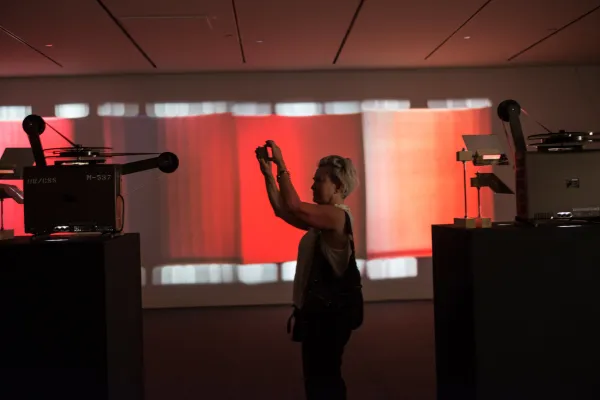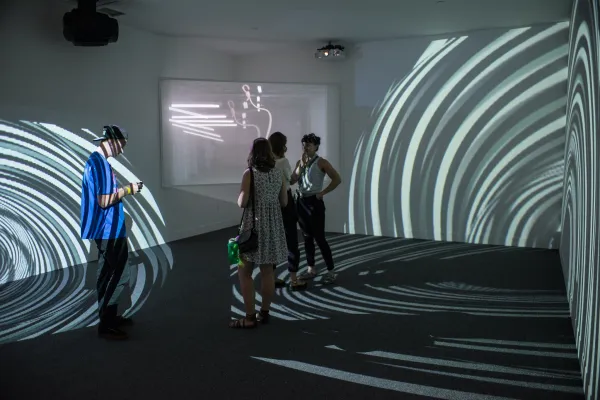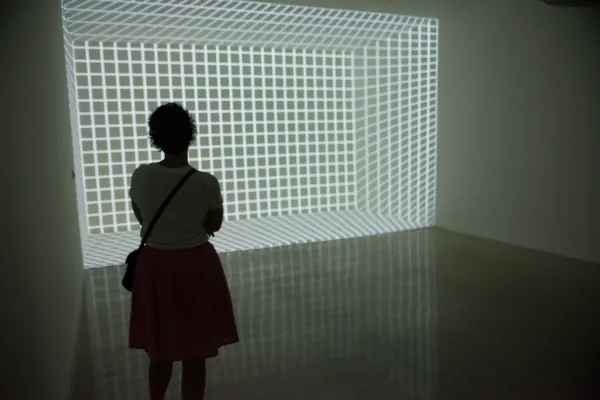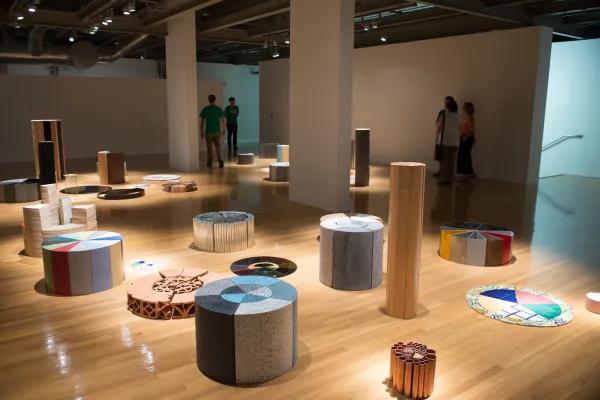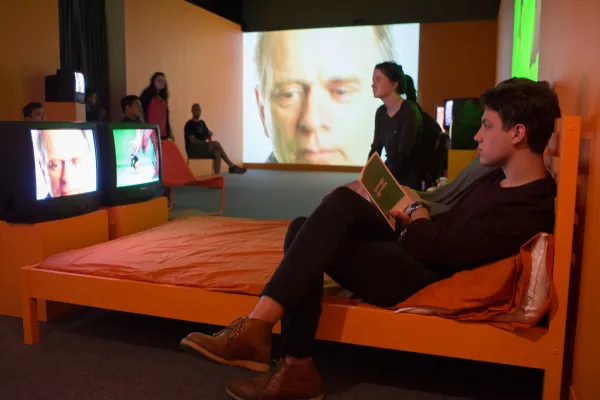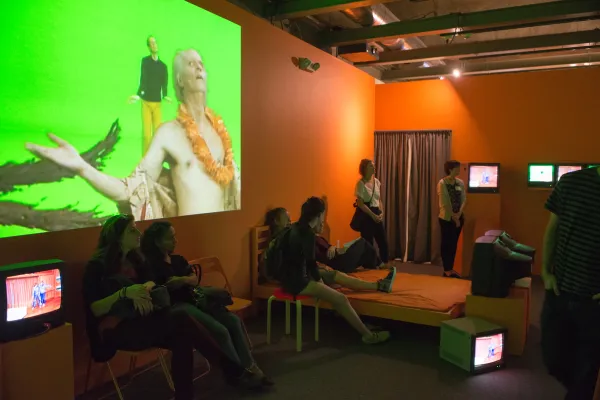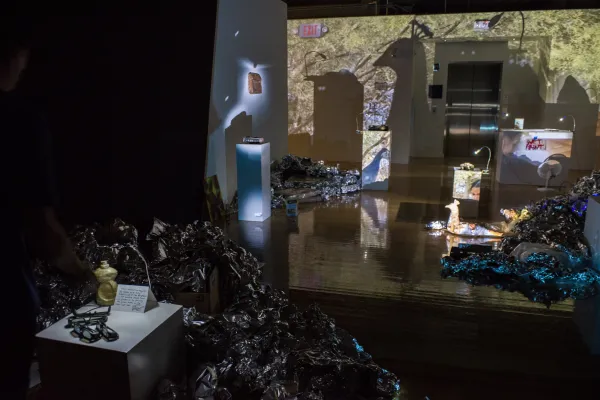Strange Pilgrims
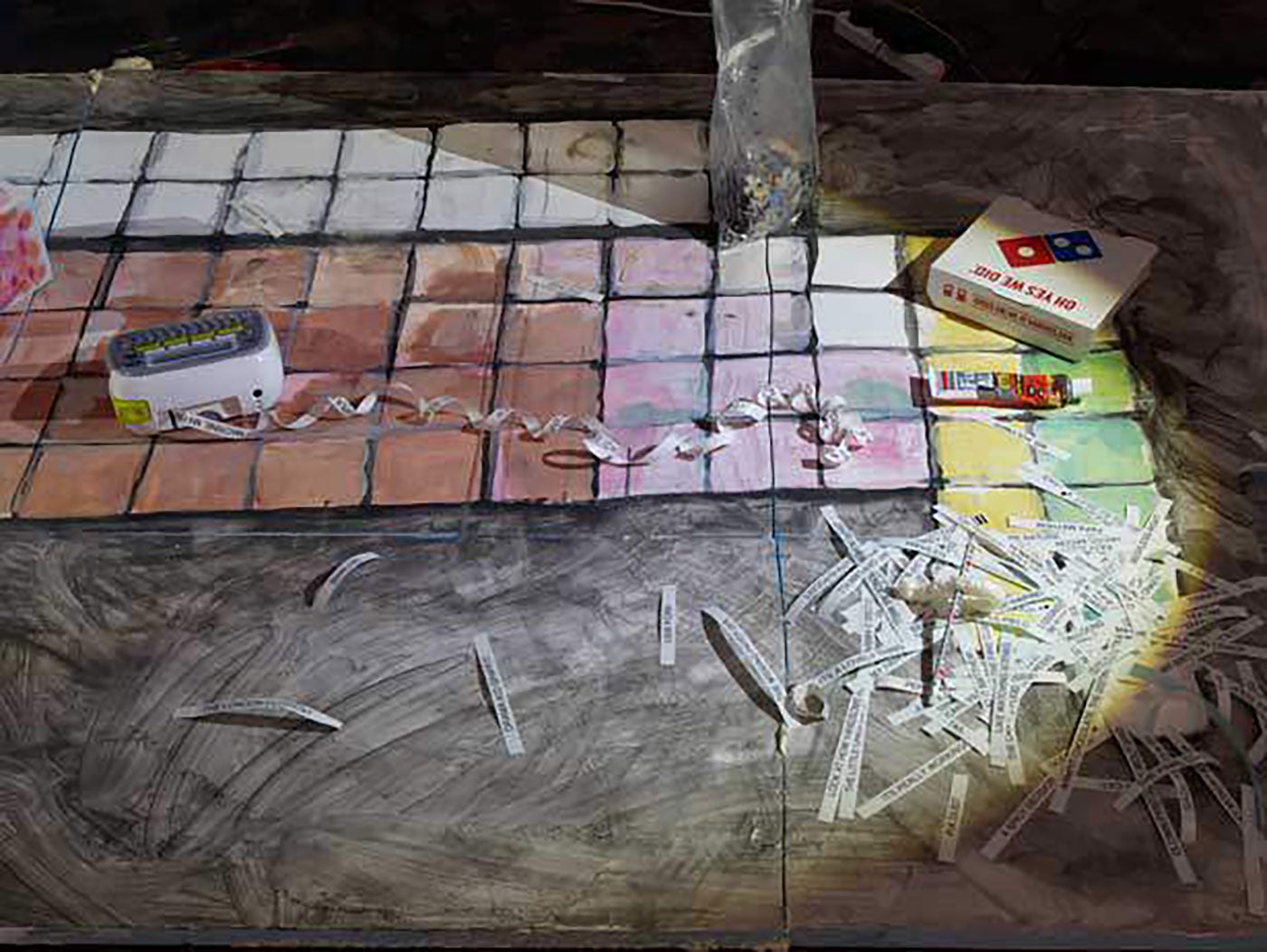
Work by Trisha Baga
Strange Pilgrims, organized by The Contemporary Austin, weaves fourteen artists into a loose collection of propositions occupying unconventional spaces and formats, defining “experiential art” as work that is immersive, participatory, performative, and kinetic, and favoring art from the vantage point of the phenomenological experience. Strange Pilgrims represents the museum’s most expansive gesture into the city of Austin and spans multiple venues: The Contemporary’s two sites as well as the Visual Arts Center.
“True memories seemed like phantoms, while false memories were so convincing that they replaced reality. This meant I could not detect the dividing line between disillusionment and nostalgia. It was the definitive solution. At last, I had found what I needed most to complete the book, what only the passing of the years could give: a perspective in time.”
— Gabriel García Márquez, Strange Pilgrims
The exhibition Strange Pilgrims begins with the metaphorical notion of the traveler: an open-ended journey through strange and unfamiliar spaces, embarking on a pilgrimage not only in time and place but also through imagination, the senses, and perception. Strange Pilgrims brings together a collection of experiential-based ideas and projects proposing unconventional gestures and formats, defining “experiential art” as work that is immersive, participatory, performative, or kinetic, and favoring art from the vantage point of the phenomenological experience. Taking its title from a collection of twelve short stories of the same name by the writer Gabriel García Márquez, Strange Pilgrims is The Contemporary Austin’s first large-scale, thematic group exhibition, and represents the museum’s most expansive gesture into the city of Austin, spanning multiple venues: The Contemporary’s two sites, the downtown Jones Center and Laguna Gloria (including the Betty and Edward Marcus Sculpture Park, the historic Driscoll Villa, and the Gatehouse Gallery), and a third venue, the Visual Arts Center in the Department of Art and Art History at The University of Texas at Austin.
Loose threads of continuity and affinity connect the various projects in Strange Pilgrims. There are those that embrace the construction of open-ended formats and processes, or theses without resolution, abandoning certainty for ambiguity, as in the work of Roger Hiorns or Andy Coolquitt. Others projects share an immersion of the senses, achieved by using nontraditional formats and media in combination with others, as seen in Trisha Baga’s multimedia playgrounds, Millie Chen’s aural-video room, or Bruce Nauman’s light-sculpture corridor. Formal affinities exist, too, such as the hybridization of media, notable in Charles Atlas’s media-dance works, or the transformation of the qualities of abstraction into three-dimensional space, as in the historical filmic “locational” installation by Paul Sharits. Process is integral to others, seen in the collective Lakes Were Rivers’ collaborative investigations of The Contemporary Austin’s Laguna Gloria site, or Sofía Táboas’s material-based topographical installation. Finally, the participation of the viewer completing the work appears in several projects, whether this is the body passing through a complex space, as in Ayşe Erkmen’s sensitive, site-specific installation, or the active decision making of the audience, catalyzed by Yoko Ono’s interactive project Summer Dream. Such kinships among divergent artists and works weave together the loose collection of propositions that make up the fabric of Strange Pilgrims.
Organized around three thematic sections—Environment & Place, Performance & Process, and Technology & Information—Strange Pilgrims is contemporary in focus, with each thematic section featuring a combination of newly commissioned works, site-specific refabrications, and existing works by artists Charles Atlas (based in New York, New York), Trisha Baga (American, born 1985 in Venice, Florida; lives in New York City), Millie Chen (Canadian, born 1962 in Taipei, Taiwan; lives in Buffalo, New York, and Ridgeway, Ontario), Phil Collins (British, born 1970 in Runcorn, England; lives in Berlin and Cologne), Andy Coolquitt (American, born 1964 in Mesquite, Texas; lives in Austin), Ayşe Erkmen (Turkish, born 1949 in Istanbul, Turkey; lives in Istanbul and Berlin), Roger Hiorns (British, born 1975 in Birmingham, England; lives in London), the collective Lakes Were Rivers (formed in Austin, Texas), Angelbert Metoyer (American, born 1977 in Houston, Texas; lives in Houston, Texas, and Rotterdam, Netherlands), and Sofía Táboas (Mexican, born 1968 in Mexico City, Mexico; lives in Mexico City). In addition, key works by pioneers in the field—Nancy Holt (American, born 1938 in Worcester, Massachusetts; died 2014 in New York City), Bruce Nauman (American, born 1941 in Fort Wayne, Indiana; lives near Galisteo, New Mexico), Yoko Ono (Japanese, born 1933 in Tokyo, Japan), and Paul Sharits (American, born 1943 in Denver, Colorado; died 1993 in Buffalo, New York)—provide historical resonance. And in a new partnership on the occasion of Strange Pilgrims, Trisha Baga has created work (including ceramics at The Contemporary Austin’s Art School) for multiple sites in the exhibition as the first artist-in-residence hosted jointly by The Contemporary Austin and the Visual Arts Center.
Strange Pilgrims is accompanied by a 250-page, full-color catalogue with a curatorial essay by Senior Curator Heather Pesanti; a scholarly essay by University of Texas at Austin Art History Professor Ann Reynolds; a conversation between philosopher Alva Noë and writer and critic Lawrence Weschler; and original artist’s contributions by Trisha Baga and Jessie Stead, Roger Hiorns, and Lakes Were Rivers. The catalogue also includes short texts and biographies for each artist, authored by Tatiana Reinoza and Robin Williams, as well as full-color plate spreads.
Strange Pilgrims is organized by Heather Pesanti, Senior Curator, The Contemporary Austin, with text also by Pesanti.
Special venue support and artist-in-residence partnership has been provided through the Visual Arts Center in the Department of Art and Art History at The University of Texas at Austin.
Strange Pilgrims Exhibition Support: The Andy Warhol Foundation for the Visual Arts, Suzanne Deal Booth, Lannan Foundation, The Moody Foundation, National Endowment for the Arts, Vision Fund Leaders and Contributors





